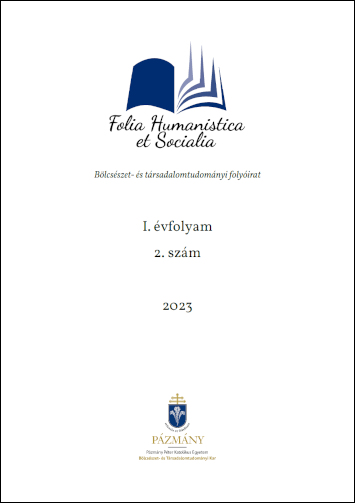Megjelent 2023-12-31 — Frissítve ekkor: 2024-06-11
Copyright (c) 2023 Kiss Fanni

This work is licensed under a Creative Commons Attribution 4.0 International License.
Absztrakt
A makrancos hölgy központi kérdése – avagy hogyan, illetve milyen eszközökkel szelídíthető meg egy féktelen, éles nyelvű nő, aki mindenkinek ellentmond – férfiak ezreit foglalkoztatja immáron évszázadok óta. Ezért e tanulmány középpontjában a rakoncátlan hölgyek megszelídítésének összehasonlítása áll, amihez Shakespeare híres színdarabját, A makrancos hölgyet, illetve annak népszerű filmadaptációját, Gil Junger 10 dolog, amit utálok benned című alkotását elemzem. A dolgozatban górcső alá veszem, hogyan próbálták a férfiak a kora újkorban, majd a modern világban engedelmességre késztetni a nőket. Emellett bemutatom, hogyan vélekedtek felvilágosult feminista gondolkodók a sokat emlegetett, úgynevezett szelídítési módszerekről, amiket a férfi főszereplők alkalmaznak a két műben.
Hivatkozások
- Balizet, A. M. (2004). Teen Scenes: Recognizing Shakespeare in Teen Film. In Keller, J.R & Staratyner, L. (eds.), Almost Shakespeare: Reinventing His Works for Cinema and Television. McFarland & Company, pp. 122-136.
- Birkin, L. (2017). Shakespearean Comedy Meets Teenage “Rom-Com” in 10 Things I Hate About You. MUsings: The Graduate Journal, https://blogs.millersville.edu/musings/shakespearean-comedy-meets-teenage-rom-com-in-10-things-i-hate-about-you/
- Blake, A. (2002). The Taming of the Shrew: Making Fun of Katherine. The Cambridge Quarterly, 31(3), 237–52. http://www.jstor.org/stable/42967805
- Detmer, E. (1997). Civilizing Subordination: Domestic Violence and The Taming of the Shrew. Shakespeare Quarterly, 48(3), 273–94. https://doi.org/10.2307/2871017
- Friedman, M. D. (2004). The Feminist as Shrew in 10 Things I Hate about You. Shakespeare Bulletin, 22(2), 45–65. http://www.jstor.org/stable/26349372
- Hutcheon, E. (2011). From Shrew to Subject: Petruchio’s Humanist Education of Katherine in The Taming of the Shrew. Comparative Drama, 45(4), 315–37. http://www.jstor.org/stable/23238783
- Junger, G, director. (1999). 10 Things I Hate About You. Touchstone Pictures.
- Koffler, L. (2019). Female Portrayals in The Taming of the Shrew Adaptations. Medium, https://medium.com/@londonskoffler/female-portrayals-in-the-taming-of-the-shrew-adaptations-b6eb5817a8e8
- Petzold, J. (2006). Subverting the Master Discourse? The Power of Women’s Words in Shakespeare’s The Taming of the Shrew and Fletcher’s The Woman’s Prize, or The Tamer Tamed. AAA: Arbeiten Aus Anglistik Und Amerikanistik, 31(2), 157–70. http://www.jstor.org/stable/26430831
- Pittman, L. M. (2004). Taming 10 Things I Hate About You: Shakespeare and the Teenage Film Audience. Literature/Film Quarterly, 32(2), 144–52. http://www.jstor.org/stable/43797167
- Raspa, R. (2010). Encouraging Whistle Berries: Paradoxical Intervention in The Taming of the Shrew. Mediterranean Studies, 19, 102–111. http://www.jstor.org/stable/41167030
- Rebhorn, W. A. (1995). Petruchio’s “Rope Tricks”: The Taming of the Shrew and the Renaissance Discourse of Rhetoric. Modern Philology, 92(3), 294–327. http://www.jstor.org/stable/438782
- Shakespeare, W. The Taming of the Shrew. Folger Shakespeare Library, Ed. Barbara Mowat, Paul Werstine, https://www.folger.edu/explore/shakespeares-works/the-taming-of-the-shrew/read/
- Shapiro, M. (1993). Framing the Taming: Metatheatrical Awareness of Female Impersonation in The Taming of the Shrew. The Yearbook of English Studies, 23, 143–66. https://doi.org/10.2307/3507978

